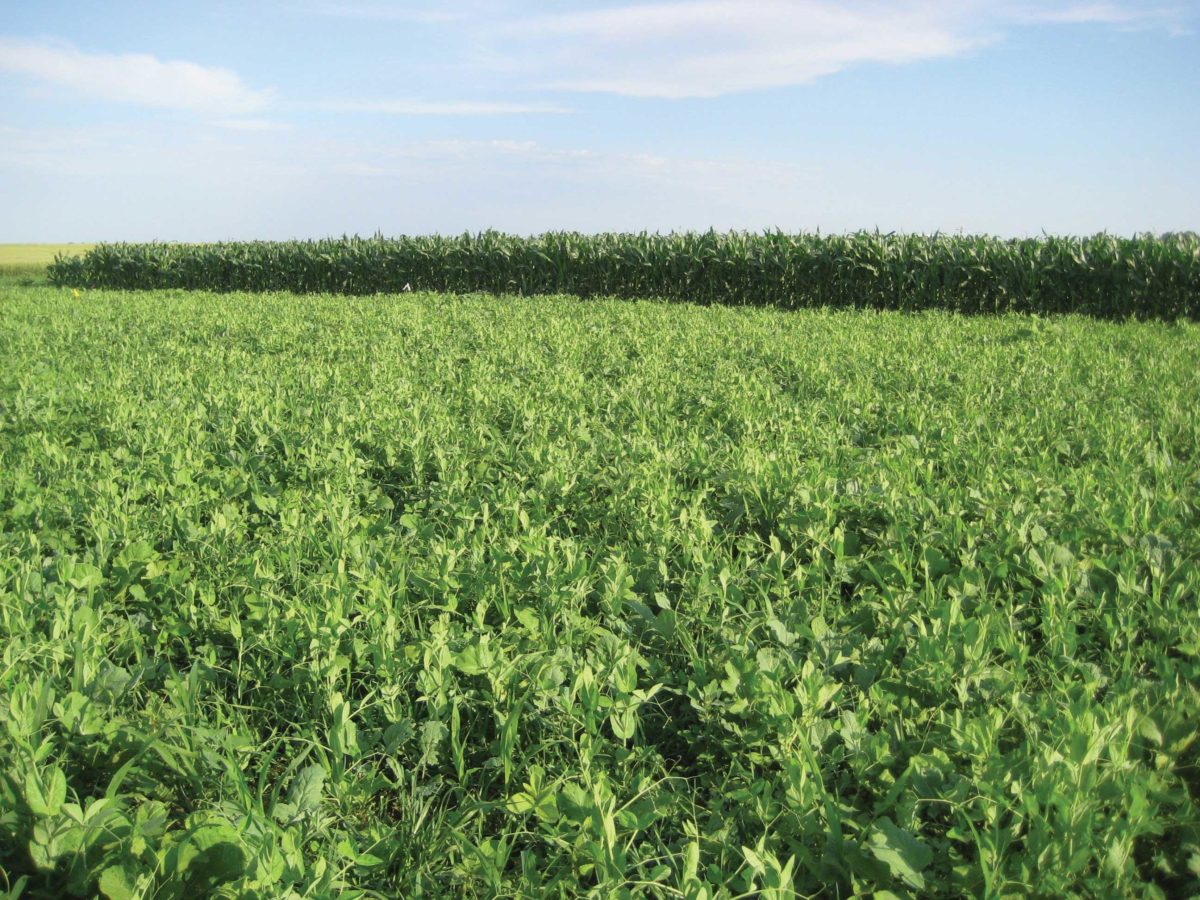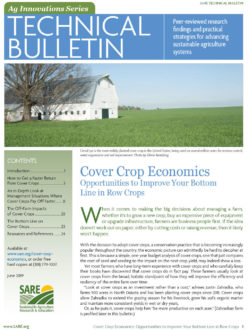
Most crop farmers across the United States are eligible for cover crop incentive payments through the NRCS. In recent years, thousands of farmers have received payments in support of cover crops through the NRCS Environmental Quality Incentives Payment (EQIP) program. These payments are intended to help farmers begin the process of cover cropping. They should not be looked at as a long-term subsidy, but they can be helpful during a three-year transition period to cover cropping.
The NRCS cover crop payment rates vary by state, often starting at $50–$54 per acre for the “basic” cover crop rate of a single species and increasing with the use of multi-species cover crop mixes or for special categories (such as organic farming or being a beginning farmer or socially disadvantaged farmer). Iowa is an example of a state with lower rates, starting at $34 per acre and going over $50 per acre for special situations. The highest EQIP cover crop incentive rates can be $60–$75 per acre or more, depending on the level set by the state NRCS office. (See Table 6.) EQIP contracts for cover crops are typically for a three-year period, and renewal is possible if state criteria are met.
Another NRCS program that supports a wide variety of conservation practices, including cover crops, is the Conservation Stewardship Program (CSP). Under CSP, farmers typically agree to do a suite of conservation practices, which can include cover crops, during a five-year contract period (renewal is possible). As with EQIP, CSP payment rates for cover crops vary by state. Some state agencies also offer cover crop incentive payments, often through local soil and water conservation districts. Some of the programs are available to any farmer in the state, while others are targeted to specific watersheds. Sometimes the funding is through a state agriculture department, and in other cases it is through a state natural resources or conservation agency. These payment rates also vary, typically starting at $30 per acre and in a few cases reaching upwards of $60 to $80 per acre, such as in the Chesapeake Bay area.
Whether the payments come from state or federal sources, financial assistance can make the transition to using cover crops affordable. Going simply by the median national cover crop seed cost of $25 per acre and a median cost of contracting out seeding at $12 per acre [5], incentive payments will quite often completely pay for the cost of using cover crops.
Snapshot: The financial impact of incentive payments for cover crops
Cover crops pay off in year one, assuming an incentive payment rate of $50 per acre, based on typical NRCS EQIP rates in the Corn Belt. Returns for corn average $18.64, 51.42 and $67.90 per acre after one, three and five years of planting a cover crop. Soybean returns average $26.45, $50.42 and $60.18 per acre after one, three and five years. (See Table 4 and Table 5 for details.) The majority of states have a “basic” cover crop incentive payment rate of $50 per acre or more, and rates for multi-species cover crops, beginning or organic farmers, or underserved audiences can be even higher. A minority of states have a basic cover crop incentive rate below $50 per acre. (See Table 6.) Applications for incentive payments are not guaranteed to be funded, but as long as guidelines are met, generally a majority of applications are approved. As stated previously, these incentive payments should be viewed in the context of providing transition support rather than as a long-term economic subsidy.
| Basic Rate | Multi-Species Rate | Highest Rate | |
| Alabama | $50.98 | $57.05 | $75.22 |
| Arkansas | $39.24 | $44.10 | $58.86 |
| California | $50.55 | $56.62 | $74.47 |
| Georgia | $49.95 | $56.02 | $67.23 |
| Illinois | $51.32 | $57.39 | $75.80 |
| Indiana | $28.18 | NA | $33.83 |
| Iowa | $33.83 | $37.88 | $56.81 |
| Kansas | $41.11 | $45.96 | $58.23 |
| Maryland | $50.81 | $56.88 | $68.26 |
| Michigan | $51.35 | NA | $61.62 |
| Minnesota | $34.02 | $38.07 | $62.76 |
| Missouri | $51.58 | NA | $61.90 |
| Montana | $50.67 | $56.73 | $60.80 |
| Nebraska | $26.96 | $33.97 | $52.88 |
| New York | $53.54 | $59.61 | $71.53 |
| North Carolina | $50.95 | $57.02 | $75.16 |
| North Dakota | $16.89 | $26.48 | $45.39 |
| Ohio | $49.90 | NA | $59.88 |
| Oregon | $33.44 | $37.48 | $56.22 |
| Pennsylvania | $53.59 | $59.66 | $79.23 |
| South Carolina | $50.94 | $57.01 | $61.13 |
| South Dakota | $28.35 | NA | $42.53 |
| Texas | $19.59 | $36.69 | $55.04 |
| Vermont | $51.03 | $57.10 | $75.30 |
| Virginia | $51.35 | $57.41 | $68.90 |
| Washington | $50.13 | $56.20 | $73.75 |
| Wisconsin | $51.18 | $57.25 | $68.70 |
1 The basic rate is for a single species of cover crop; multi-species is the rate for two or more species of cover crops. The highest rates generally are for either organic and/or beginning farmers and/or historically underserved farmers.
